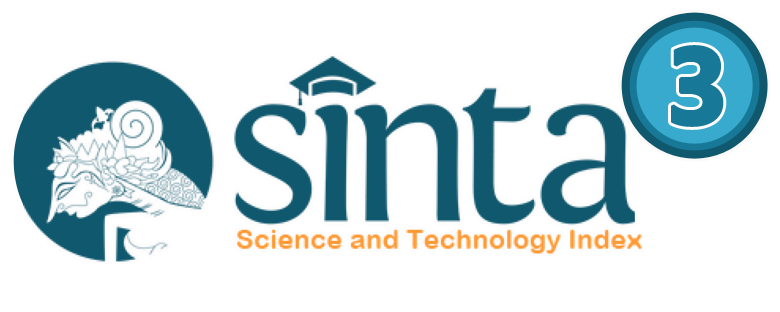Analisis Reaksi Pasar Terhadap Perubahan Auto Rejection 15% Menjadi Auto Rejection Simetris
Abstract
Full Text:
PDFReferences
Aktas, O. U., Kryzanowski, L., & Zhang, J. (2021). Volatility spillover around price limits in an emerging market. Finance Research Letters, 39. https://doi.org/10.1016/j.frl.2020.101610
Al-Qudah, A. A., & Houcine, A. (2022).
Stock markets’ reaction to COVID-19: evidence from the six WHO regions. Journal of Economic Studies, 49(2), 274–289. https://doi.org/10.1108/JES-09-2020-0477
Anwar, F. , & Asandimitra, N. (2018). Analisis Perbandingan Abnormal Return,Trading Volume Activity, dan Bid-Ask Spread Sebelum dan Sesudah Stock Split. Bisnis Dan Manajemen.
Deng, T., Xu, T., & Lee, Y. J. (2022). Policy responses to COVID-19 and stock market reactions - An international evidence. Journal of Economics and Business, 119. https://doi.org/10.1016/j.jeconbus.2021.106043
Haradhyaksa Bagas. (2022). Analysys of Changes in Auto Rejection Regulation Due To The Pandemic And Its Effect On The Indonesia Sharia Stock Index. . Journal of Islamic Studies and Humanities7, 7(2).
Karavias, Y., Narayan, P. K., & Westerlund, J. (2023). Structural Breaks in Interactive Effects Panels and the Stock Market Reaction to COVID-19. Journal of Business and Economic Statistics, 41(3), 653–666. https://doi.org/10.1080/07350015.2022.2053690
Kusumawardani, A., Rahmadhani, S., Praptitorini, M. D., & Kase, R. (2023). PENGARUH SELF-ATTRIBUTION BIAS DAN RISK PERCEPTIONS TERHADAP PENGAMBILAN KEPUTUSAN INVESTOR PASAR MODAL. Jurnal Riset Manajemen Dan Akuntansi, 3(2), 224–234. https://doi.org/10.55606/jurima.v3i2.2254
Ratih Ika Wijayanti. (2022). Apa Itu Auto Rejection Saham, ARA dan ARB? Berikut Penjelasannya. IDX Channel.
Saputri, D. A., Mauli, K., Hutauruk, R., Yapan, U. F., Syafira, E., Profesi, P., Fakultas, A., & Bisnis, E. (2023). Fundamental and Applied Management Journal Indonesian Journal of Taxation and Accounting Analisis Komparatif Perubahan Auto Rejection Asimetris Dalam Peningkatan Nilai Harga Saham (Studi Kasus Sub Sektor Farmasi yang Terdaftar di Bursa Efek Indonesia). Indonesian Journal of Taxation and Accounting, 1(1).
Sri Murni, R. E., & Tulung, J. E. (2022). DI INDONESIA (EVENT STUDY PADA INDEKS LQ45) CAPITAL MARKET REACTION TO EVENTS BEFORE AND AFTER THE COVID-19 ANNOUNCEMENT IN INDONESIA (EVENT STUDY ON LQ45 INDEX COMPANIES). 1052 Jurnal EMBA, 10(1). www.finance.yahoo.com
Suharyadi, & Purwanto. (2016). Statistika Untuk Ekonomi dan Keuangan Moderen.
Tandelilin Eduardus. (2010). Portofolio dan Investasi Teori dan Aplikasi. Kanisius.
Urip Wardoyo, D., Permata Octavianty, R., & Wishnu Wardhana, R. (2022). Analisis Harga Saham Terhadap Efisiensi Pasar Modal Dimasa Pandemi Covid-19 Periode 2019-2020. In Jurnal Ilmiah Multidisiplin (Vol. 1, Issue 2).
Utami, A. R., & Mawardi, W. (2021). PENGARUH PENERAPAN PRICE LIMIT DAN TRADING HALT TERHADAP VOLATILITAS RETURN DAN PEMBENTUKAN HARGA DI BURSA EFEK INDONESIA TAHUN 2020. DIPONEGORO JOURNAL OF MANAGEMENT, 10(2). http://ejournal-s1.undip.ac.id/index.php/dbr
Yulianti, E., Siregar, I. W., & Susyani, N. (2022). Analisis reaksi pasar modal terhadap berbagai pengumuman kasus Covid-19 pada fase awal. Journal of Business and Banking, 12(1), 51. https://doi.org/10.14414/jbb.v12i1.2951
Yusran, C., & Lesmana, D. (n.d.). Analisis Perbedaan Harga Saham, Volume Perdagangan Dan Volatilitas Return Pada Saham Consumer goods Yang Terdaftar Di Bei Sebelum Dan Sesudah Perubahan Kebijakan Auto rejection. https://www.idx.co.id/investor/mekanisme-perdagangan/
DOI: http://dx.doi.org/10.24036/jmpe.v6i4.15565


